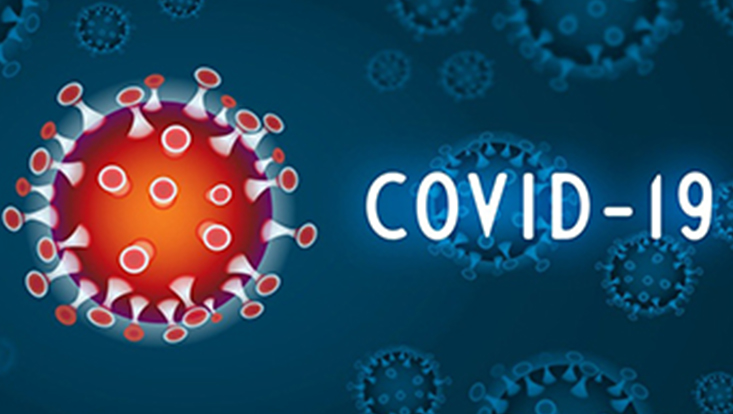Coronavirus Resources

If an Employee Tests Positive for COVID-19
The following steps for responding when an employee tests positive for the coronavirus are based on the U.S. Centers for Disease Control and Prevention's Interim Guidance for Businesses and Employees.
Immediate Response
Employees who have COVID-19 symptoms (i.e., fever, cough, or shortness of breath) should notify their supervisor and stay home.
Employees who appear to have symptoms upon arrival at work or who become sick during the day should immediately be separated from other employees, customers, vendors, and visitors, and sent home.
Sick employees should follow CDC-recommended steps. Employees should not return to work until the criteria to discontinue home isolation are met, in consultation with healthcare providers and state and local health departments.
Employees who are well but who have a sick family member at home with COVID-19 should notify their supervisor and follow CDC recommended precautions.
Protect Other Employees
If an employee is confirmed to have COVID-19, employers should inform fellow employees of their possible exposure but maintain confidentiality as required by the Americans with Disabilities Act.
Fellow employees should self-monitor for symptoms.
Identify where the infected employee worked, as well as those individuals—including colleagues, customers, visitors, and vendors—the infected employee came into contact with during the 14 days prior to testing positive or first displaying symptoms.
Employers should notify affected customers, visitors, and vendors and instruct those employees who came into contact with the sick employee within the 14 day period to go home and self-isolate for 14 days, working remotely if possible.
Employees should not return to work until the criteria to discontinue home isolation are met. The CDC advises that critical infrastructure workers may be permitted to continue work following potential exposure to COVID-19, provided they remain asymptomatic and additional precautions are implemented.
OSHA recordkeeping requirements mandate covered employers record certain work-related injuries and illnesses on their OSHA 300 log. OSHA released new guidance May 19 that employers are responsible for recording a COVID-19 case if it is confirmed as a COVID-19 illness; is work-related; and involves one or more of the general recording criteria, such as medical treatment beyond first aid or days away from work.
Workplace Environment
Based on the size of the workplace and the potential breadth of exposure to coronavirus, the employer should consider closing immediately, coordinating with employees to work remotely if possible.
Perform enhanced cleaning and disinfection after persons suspected or confirmed to have COVID-19 have been in your facility, following CDC cleaning and disinfection recommendations.
Employers should develop policies for worker protection and provide training to all cleaning staff on site prior to providing cleaning tasks. Training should include when to use personal protective equipment, what PPE is necessary, how to properly wear, use, and take off PPE, and how to properly dispose of PPE.
Employers must ensure workers are trained on the hazards of the cleaning chemicals used in the workplace in accordance with appropriate OSHA standards.
Collaborate with local and state health departments to ensure appropriate protocols and guidelines, such as updated/additional guidance for cleaning and disinfection, are followed, including for identification of new potential cases of COVID-19.
Sick Leave, FMLA
From April 1, 2020 through December 31, 2020, federal law mandates that employers with less than 500 employees provide workers with paid sick leave or paid family and medical leave for specified reasons related to COVID-19.
Employers qualify for dollar-for-dollar reimbursement through tax credits for all qualifying wages paid under the federal paid sick leave and paid FMLA mandates.
Smaller employers with fewer than 50 employees may qualify for exemption from the federal requirement to provide leave due to school closings or child care unavailability if the leave requirements would jeopardize the viability of the business as a going concern.

CDC: Safety Practices for Critical Workers with Possible COVID-19 Exposure
To ensure continuity of operations of essential functions, the U.S. Centers for Disease Control and Prevention advises that critical infrastructure workers may be permitted to continue work following potential exposure to COVID-19, provided they remain asymptomatic and additional precautions are implemented to protect them and the community.
A potential exposure means being a household contact or having close contact within six feet of an individual with confirmed or suspected COVID-19. The time frame for having contact with an individual includes the period of time of 48 hours before the individual became symptomatic.
Critical Infrastructure workers who have had an exposure but remain asymptomatic should adhere to the following practices prior to and during their work shift:
Pre-Screen: Employers should measure the employee’s temperature and assess symptoms prior to them starting work. Ideally, temperature checks should happen before the individual enters the facility.
Regular Monitoring: As long as the employee doesn’t have a temperature or symptoms, they should self-monitor under the supervision of their employer’s occupational health program.
Wear a Mask: The employee should wear a face mask at all times while in the workplace for 14 days after last exposure. Employers can issue facemasks or can approve employees’ supplied cloth face coverings in the event of shortages.
Social Distance: The employee should maintain 6 feet and practice social distancing as work duties permit in the workplace.
Disinfect and Clean work spaces: Clean and disinfect all areas such as offices, bathrooms, common areas, shared electronic equipment routinely.
If the employee becomes sick during the day, they should be sent home immediately. Surfaces in their workspace should be cleaned and disinfected. Information on persons who had contact with the ill employee during the time the employee had symptoms and 2 days prior to symptoms should be compiled. Others at the facility with close contact within 6 feet of the employee during this time would be considered exposed.
Employers should implement the recommendations in the Interim Guidance for Businesses and Employers to Plan and Respond to Coronavirus Disease 2019 to help prevent and slow the spread of COVID-19 in the workplace. Additional information about identifying critical infrastructure during COVID-19 can be found on the DHS CISA website or the CDC’s speci c First Responder Guidance page.
Additional Considerations:
- Employees should not share headsets or other objects that are near mouth or nose.
- Employers should increase the frequency of cleaning commonly touched surfaces.
- Employees and employers should consider pilot testing the use of face masks to ensure they do not interfere with work assignments.
- Employers should work with facility maintenance staff to increase air exchanges in room.
- Employees should physically distance when they take breaks together.
- Stagger breaks and don’t congregate in the break room, and don’t share food or utensils.

Federal Coronavirus Paid FMLA, Sick Leave Requirements
The Families First Coronavirus Response Act requires certain employers to provide employees with paid sick leave or expanded family and medical leave for specified reasons related to COVID-19.
The U.S. Department of Labor's Wage and Hour Division administers and enforces the new law's paid leave requirements. These provisions will apply from April 1, 2020 through December 31, 2020.
Generally, the act provides that covered employers must provide to all employees:
- Two weeks (up to 80 hours) of paid sick leave at the employee's regular rate of pay where the employee is unable to work because the employee is quarantined (pursuant to federal, state, or local government order or advice of a healthcare provider), and/or experiencing COVID-19 symptoms and seeking a medical diagnosis; or
- Two weeks (up to 80 hours) of paid sick leave at two-thirds the employee's regular rate of pay because the employee is unable to work because of a bona fide need to care for an individual subject to quarantine (pursuant to federal, state, or local government order or advice of a healthcare provider), or care for a child (under 18 years of age) whose school or child care provider is closed or unavailable for reasons related to COVID-19, and/or the employee is experiencing a substantially similar condition as specified by the Secretary of Health and Human Services, in consultation with the secretaries of the Treasury and Labor.
A covered employer must provide to employees that it has employed for at least 30 days:
- Up to an additional 10 weeks of paid expanded family and medical leave at two-thirds the employee's regular rate of pay where an employee is unable to work due to a bona fide need for leave to care for a child whose school or child care provider is closed or unavailable for reasons related to COVID-19.
Covered Employers
The paid sick leave and expanded family and medical leave provisions of the FFCRA apply to certain public employers, and private employers with fewer than 500 employees.
Most employees of the federal government are covered by Title II of the Family and Medical Leave Act, which was not amended by this act, and are therefore not covered by the expanded family and medical leave provisions of the FFCRA.
However, federal employees covered by Title II of the Family and Medical Leave Act are covered by the paid sick leave provision.
Small businesses with fewer than 50 employees may qualify for exemption from the requirement to provide leave due to school closings or child care unavailability if the leave requirements would jeopardize the viability of the business as a going concern.
Qualifying Reasons for Leave
Under the FFCRA, an employee qualifies for paid sick time if the employee is unable to work (or unable to telework) due to a need for leave because the employee:
- is subject to a Federal, State, or local quarantine or isolation order related to COVID-19;
- has been advised by a healthcare provider to self-quarantine related to COVID-19;
- is experiencing COVID-19 symptoms and is seeking a medical diagnosis;
- is caring for an individual subject to an order described in (1) or self-quarantine as described in (2);
- is caring for a child whose school or place of care is closed (or child care provider is unavailable) for reasons related to COVID-19; or
- is experiencing any other substantially-similar condition specified by the Secretary of Health and Human Services, in consultation with the Secretaries of Labor and Treasury.
Under the FFCRA, an employee qualifies for expanded family leave if the employee is caring for a child whose school or place of care is closed (or child care provider is unavailable) for reasons related to COVID-19.
Duration of Leave
For reasons (1)-(4) and (6): A full-time employee is eligible for up to 80 hours of leave, and a part-time employee is eligible for the number of hours of leave that the employee works on average over a two-week period.
For reason (5): A full-time employee is eligible for up to 12 weeks of leave at 40 hours a week, and a part-time employee is eligible for leave for the number of hours that the employee is normally scheduled to work over that period.
Calculation of Pay
For leave reasons (1), (2), or (3): employees taking leave shall be paid at either their regular rate or the applicable minimum wage, whichever is higher, up to $511 per day and $5,110 in the aggregate (over a two-week period).
For leave reasons (4) or (6): employees taking leave shall be paid at two-thirds their regular rate or two-thirds the applicable minimum wage, whichever is higher, up to $200 per day and $2,000 in the aggregate (over a two-week period).
For leave reason (5): employees taking leave shall be paid at 2/3 their regular rate or two-thirds the applicable minimum wage, whichever is higher, up to $200 per day and $12,000 in the aggregate (over a 12-week period—two weeks of paid sick leave followed by up to 10 weeks of paid expanded family and medical leave).
Tax Credits
Covered employers qualify for dollar-for-dollar reimbursement through tax credits for all qualifying wages paid under the FFCRA.
Qualifying wages are those paid to an employee who takes leave under the act for a qualifying reason, up to the appropriate per diem and aggregate payment caps.
Every dollar of required paid leave (plus the cost of the employer's health insurance premiums during leave) will be 100% covered by a dollar-for-dollar refundable tax credit available to the employer.
Employer Notice
Each covered employer must post in a conspicuous place on its premises a notice of FFCRA requirements.
Prohibitions
Employers may not discharge, discipline, or otherwise discriminate against any employee who takes paid sick leave under the FFCRA and files a complaint or institutes a proceeding under or related to the FFCRA.
Penalties and Enforcement
Employers in violation of the first two weeks' paid sick time or unlawful termination provisions of the FFCRA will be subject to the penalties and enforcement described in Sections 16 and 17 of the Fair Labor Standards Act.
Employers in violation of the provisions providing for up to an additional 10 weeks of paid leave to care for a child whose school or place of care is closed (or child care provider is unavailable) are subject to the enforcement provisions of the Family and Medical Leave Act.
The department will observe a temporary period of non-enforcement for the first 30 days after the act takes effect, so long as the employer has acted reasonably and in good faith to comply.
For purposes of this non-enforcement position, good faith exists when violations are remedied and the employee is made whole as soon as practicable by the employer, the violations were not willful, and the department receives a written commitment from the employer to comply with the act in the future.

SUGGESTED SAFETY PROTOCOLS
This document has emerged from conversations with our state and local governmental officials, as well as business leaders ensuring that the reopening of our local economy take place in a thoughtful and safe manner.
Health and Safety First
- ALL VULNERABLE INDIVIDUALS should continue to shelter at home. We strongly recommend anyone 65 years or older shelter in place. It is also highly recommended that anyone with underlying health conditions should continue to shelter at home. Members of households with vulnerable residents should be aware that by returning to work or other environments where distancing is not practical, they could carry the virus back home. Precautions should be taken to isolate from vulnerable residents.
- ALL INDIVIDUALS, WHEN IN PUBLIC (e.g., parks, outdoor areas, shopping areas) should maximize physical distance from others (minimum of 6 feet). Social settings of more than 10 people, where appropriate distancing may not be practical, should be avoided unless precautionary measures are observed.
- AVOID SOCIALIZING in groups of more than 10 people in circumstances that do not readily allow for appropriate physical distancing (e.g., receptions, trade shows).
This document is meant to be suggested foundation, to be customized for each individual business to implement any additional protocols required to protect their staff and patrons.
Suggested Safety Protocols for consideration:
STORES & SHOPS
- Maintain no more than 10 people in the store, including staff.
- Staff to wear proper PPE at all times.
- Urge or require patrons to wear masks.
- Hand sanitizer provided for anyone entering and exiting the building.
- Customers should respect six-foot distances.
- As customers depart, shop owners should establish guidance for employees regarding cleaning and disinfecting the doors, handles.
- There should be continuous disinfecting throughout the store, and high touch surfaces include: doorknobs, light switches, counter tops, handles, desks, phones, keyboards, toilets, faucets, sinks, etc.
- Prop open the entry door, when applicable and appropriate, to reduce the amount of contact.
- Try to limit the number of occupants in each bathroom, as well as disinfecting after every use.
- Ensure cleaning is undertaken according to current CDC recommendations.
- Train staff on protocols and new procedures, Identify a manager responsible for implementing plan and monitoring compliance. Monitor effectiveness.
OFFICES
- Six feet apart and faces covered: All employees should be encouraged to remain at least six feet apart while in office or business settings and wear protective face coverings such as masks as much as possible. Wearing a face covering or mask is not a substitute, but rather an additive protection, if social distancing is compromised.
- Social distancing guidance: These may include guidance to limit in-person meetings and restrictions on building access to all vendors that are not cleared in advance and by-appointment only. Any in-person team meetings should require six foot spacing and be limited to the number of participants the room can accommodate to comply with spacing requirements.
- PPE availability: PPE should be offered to office workers and available in enough quantity for workplaces that reopen.
- Enhanced, robust cleaning should happen daily at all businesses and offices, and surfaces wiped multiple times daily. The state should consider recommending a standard for thorough cleaning and sanitization procedures.
- Work from home: Some businesses may choose to keep some employees working from home indefinitely if the employee or contractor can continue to fulfill job requirements. This should continue to be encouraged to allow for robust social distancing protocols.
- Remote meeting: Most interactions with clients should be handled via call or interactive video conference.
- Appointments should be properly spaced to avoid crowded waiting rooms.
- Other health and safety standards for business locations should be followed, such as:
- Frequent hand washing with warm water and soap (or an alcohol-based hand sanitizer) to be done by all, particularly after coming into contact with any materials, surfaces, packages, etc.
- Properly covering mouths when coughing or sneezing by using a handkerchief, disposable tissue, or inner bend of the elbow.
- Protocol for anyone not feeling well, either with a fever or other unusual feeling, to remain at home.
- Establishing organizational policies to guide what happens if and when a person at the workplace is found to be COVID-19 positive, such as quarantining, enhanced sanitization, temporary office closure, contact tracing, etc.
Louisiana Department of Health Guidance:
- Be sure to clean high touch surfaces to disinfect include: doorknobs, light switches, countertops, handles, desks, phones, keyboards, toilets, faucets, sinks, etc.
Recommended Cleaning Products:
- Clean the areas or items with soap and water or another detergent if it is dirty. Then, use disinfectant.
- Recommend use of EPA-registered household disinfectant. Follow the instructions on the label to ensure safe and effective use of the product.
Many products recommend:
- Keeping surface wet for a period of time (see product label)
- Precautions such as wearing gloves and making sure you have good ventilation during use of the product.
- Diluted household bleach solutions may also be used if appropriate for the surface.
- Check the label to see if your bleach is intended for disinfection, and ensurethe product is not past its expiration date. Some bleaches, such as those designed for safe use on colored clothing or for whitening may not be suitable for disinfection.
- Unexpired household bleach will be effective against coronaviruses when properly diluted.
- Follow manufacturer’s instructions for application and proper ventilation.
- Never mix household bleach with ammonia or any other cleanser.
- Leave solution on the surface for at least 1 minute.
- To make a bleach solution, mix:
-
- 5 tablespoons (1/3rd cup) bleach per gallon of water, or
- 4 teaspoons bleach per quart of water
-
- Alcohol solutions with at least 70% alcohol may also be used.
Other Readings on Re-opening:
OSHA Guidance on Preparing Workplaces for COVID 10
https://www.osha.gov/Publications/OSHA3990.pdf
10 Steps All Workplaces Can Take to Reduce Risk of Exposure to Coronavirus, OSHA Poster

